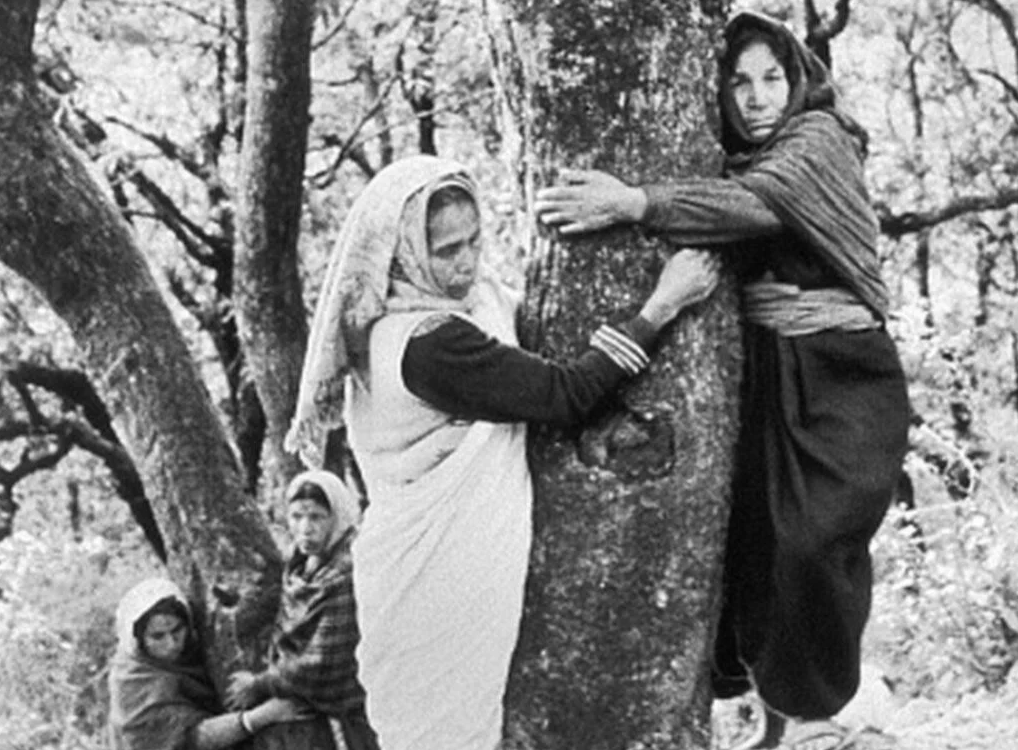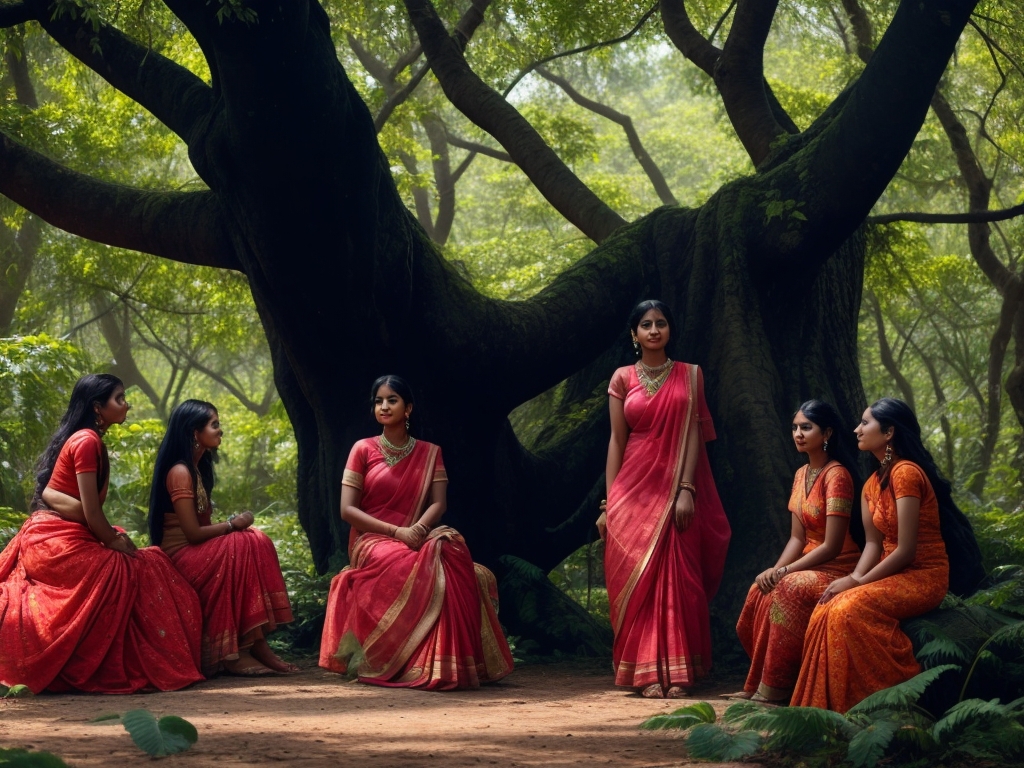A few decades ago, there was a risk of huge environmental destruction due to the activities of selling trees and clearing land in an area belonging to the state of Uttar Pradesh, India. At that time, the people living in that area embraced the huge trees that were ready to be cut down. They organized an extremely peaceful protest later known as the “Chipko” and the people who participated in it were known as “Tree Huggers”.
By the 1960s, a project called “Dasholi Gram Swarajya Sangh” was started, focusing on the “Uttarakhand” region of present-day Uttar Pradesh state of India. Its primary objective was to start small-scale industries by utilizing the resources of the forests in that area. “Chandi Prasad“, who was a follower of Mahatma Gandhi and an environmentalist, the pioneer of the Indian Independence War, was its founder.
The first factory opened under this program was one that produced equipment for local farms. The resources of the forest were used for its production activities and the people living in that area got employment opportunities there. Although the project was implemented in a manner that did not harm the environment, by this time, several projects were also implemented that destroyed the environment around that area. At that time, plots and trees belonging to forests were being auctioned through a contract system. The jobs of the traditional residents of the area were lost due to the contractors bringing workers from other areas to work on those lands. They were given very tedious jobs like quarrying stones in those lands and very small remuneration.
The forest system of the area was being destroyed due to the clearing of land for various projects and the disposal of waste from those projects into the environment. The rapid increase in the number of people who came from other areas and settled in this area and they did not care about the environment also caused the destruction of the environment. The ever-increasing environmental destruction also led to the major flood and landslide disaster in July 1970.
A river flowing through the area was blocked due to a large landslide which led to the flood situation. As a result, several villages at a distance of 320 kilometers were destroyed. As a result of various construction projects, by the 1970s, the area was prone to frequent floods and landslides.
The villagers against environmental destruction
Villagers living in this area, especially women, organized themselves against the contract system, which was destroying the environment and depriving them of their traditional jobs. In April 1973, a Farm Equipment Manufacturing Factory rejected a request made by the concerned state department to cut down ten trees and allowed a company located in another area to cut about 300 trees. Due to this, the workers of the factory also joined the protests.
The team of tree cutters sent by the concerned factory to this area had to face an unexpected incident. A group of nearly 100 villagers and Sang factory workers, beating drums and chanting slogans, forced the group of loggers to go back. After that protest, the relevant state department canceled the permission given to an outside company to cut trees and gave it to the Sang company. This protest is believed to have marked the beginning of the Chipko movement.
Although the problem was solved to some extent due to that protest. But there was a lot of talk about the auctioning of commercially operated land in this area and the government’s policy regarding forests. The reason for this is that the government, which followed a rather strict policy regarding factories that operated in a manner that did not harm the villagers and the environment, followed a lenient policy regarding projects that operated in a way that destroyed the environment by clearing large forests. On another occasion, when a company located in another area was permitted to cut down a large number of trees, there was opposition from the villagers. Due to the protest that lasted for many days, the company’s delegation left. After this protest in June 1974, until December of that year, the residents worked together to protect the trees. They worked in groups to protect the trees during the day and night and left the cut trees of the person who came to cut the trees in the same place and went back out.
Women who hugged trees
The Chipko movement reached its peak in January 1974 when the government decided to hold an auction for the sale of 2,500 trees belonging to the village called “Reni”. On March 25, 1974, tree cutters came to that village. When the tree cutters arrived, the government officials and contractors had arranged to send the men of the village and the employees of the Sang Company to another place, saying that it was for a compensation program.
When a young woman heard that the tree cutters had come, she ran and informed Gaura Devi, the wife of the village chief. As soon as the information was received, 27 women including Gaura Devi rushed to the place where the tree cutters and contractors were staying. As the group of women continued to protest, the loggers and contractors became enraged and tried to intimidate the women by pointing guns at them. However, the women hugged the trees that were about to be cut down and protected them from the loggers.

Image credits: www.bbc.com
The group of women hugged the trees that night and finally, the tree cutters and contractors were not allowed to cut the trees. The men of that village who returned the next day and the people of the surrounding villages also joined the protest in large numbers. As they hugged the trees for four consecutive days and did not allow them to be felled, the contractors and fellers eventually left the site.
With this incident, news of the Chipko (a Hindi word meaning to hold fast) movement spread rapidly across India. The then Chief Minister of Uttar Pradesh appointed a special committee to look into the incident and its background and make appropriate recommendations. The committee gave a decision that was fair to the villagers.
Since then, this protest has become known around the world as one of the most peaceful and unique movements for environmental protection. Inspired by it, a massive protest movement was launched in 2017 against the cutting down of around 4,000 trees in West Bengal.
On March 26, 2004, a program was organized to celebrate the 30th anniversary of the Chipco movement with the participation of a group of people who participated in this protest and were still alive at that time. During the program, which started from the location of Gaura Devi’s house, arrangements were made to remember all the activists who had participated in this protest – who had died at that time.


Wow Thanks for this blog post i find it hard to stumble on excellent guidance out there when it comes to this subject matter thank for the site site
Wow Thanks for this thread i find it hard to identify decent advice out there when it comes to this content appreciate for the publish website
Wow Thanks for this write-up i find it hard to find very good particulars out there when it comes to this subject matter appreciate for the post site
Wow Thanks for this blog post i find it hard to obtain smart guidance out there when it comes to this topic appreciate for the site site
Wow Thanks for this page i find it hard to come up with smart information and facts out there when it comes to this blog posts appreciate for the post website
nice blog mate.. amazing content.. this one i search for. thank you